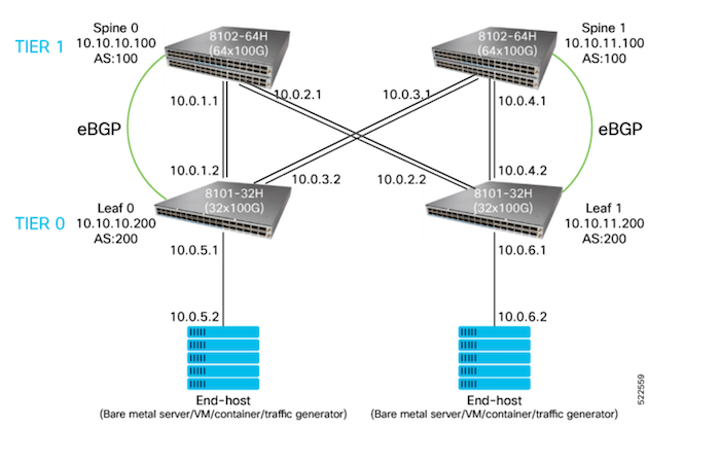A modern cloud-scale data center network requires resilient server-to-server communication, even when faced with a large and rapid increase in the number of devices on the network. This can be achieved with Software for Open Networking in the Cloud (SONiC), which has gained a large following in the open-source community and has been deployed and tested in some of the world’s largest and most demanding cloud networks.
SONiC is an open-source, Linux-based network operating system with support from multiple vendors and ASIC manufacturers. It can deliver a full suite of network-supported features, including Border Gateway Protocol (BGP), remote direct memory access (RDMA), QoS, and various other Ethernet/IP technologies.
In July of this year, we published SONiC documentation on Developer Experience.
The next stage: The SONiC sandbox.
What is in the SONiC sandbox?
The new Developer Sandbox is a Cisco 8000 emulator that allows you to build virtual network simulations (or labs) to experiment with new topologies, protocols, and configuration changes. In the sandbox, you can automate network tests through CI/CD pipeline integration, and learn other new things about the cool world of networking, SONiC, and our Cisco 8000 line. The new sandbox topology has:
- 4 Cisco 8000 routers that run the SONiC operating system (OS)
- Linux server that runs TREX traffic generator.
You can use this emulated network to explore the capabilities of the latest release of Cisco 8000 SONiC Personal and Enterprise OS.

Looking to get started?
The sandbox has two use cases, played by Jupyter Notebooks. The first is a notebook that brings up a 3-stage Clos network, and the second is a 3-Stage Clos Network with Static VXLAN to make networks more scalable. With it, you will be able to simulate server-to-server traffic flow across the 3-stage Clos network, and connect the TREX software traffic generator ports as the end-hosts to LEAF0 and LEAF1.
We hope you find the new SONiC sandbox useful!
- Check it out: Get started now with the new SONiC sandbox!
We’d love to hear what you think. Ask a question or leave a comment below.
And stay connected with Cisco DevNet on social!
LinkedIn | Twitter @CiscoDevNet | Facebook | YouTube Channel

CONNECT WITH US